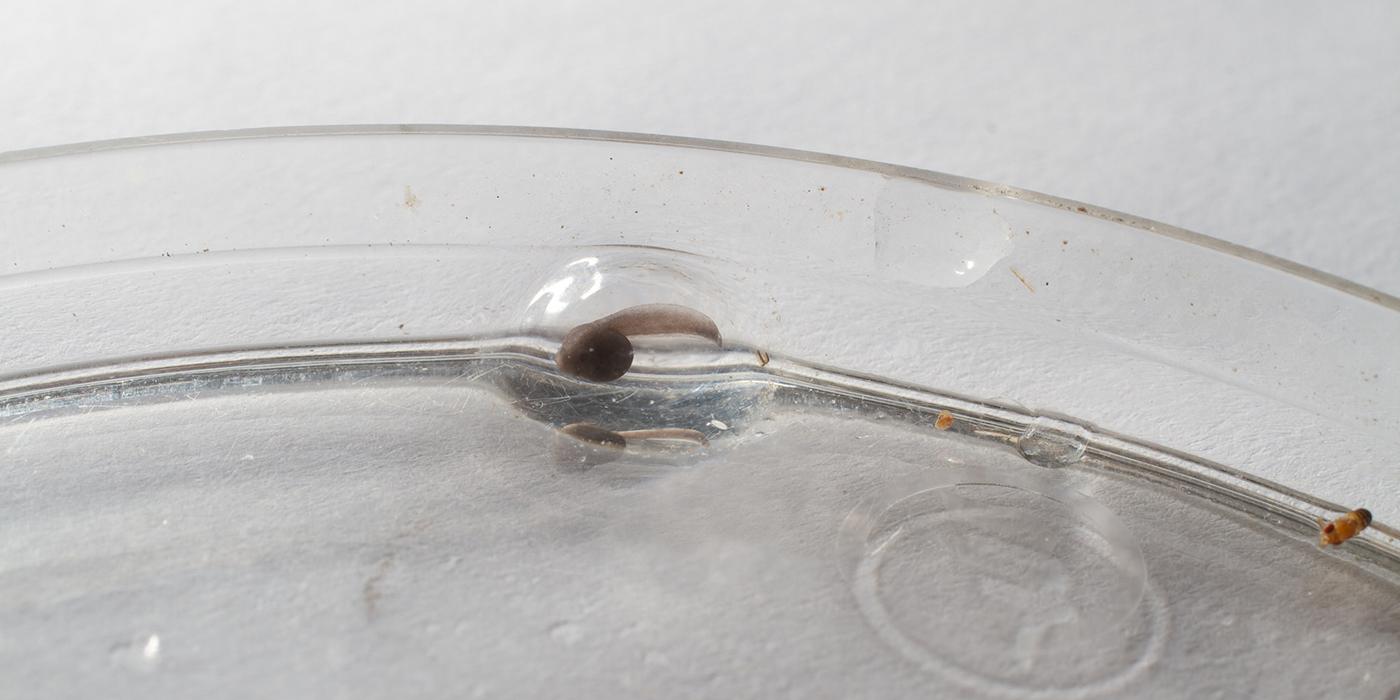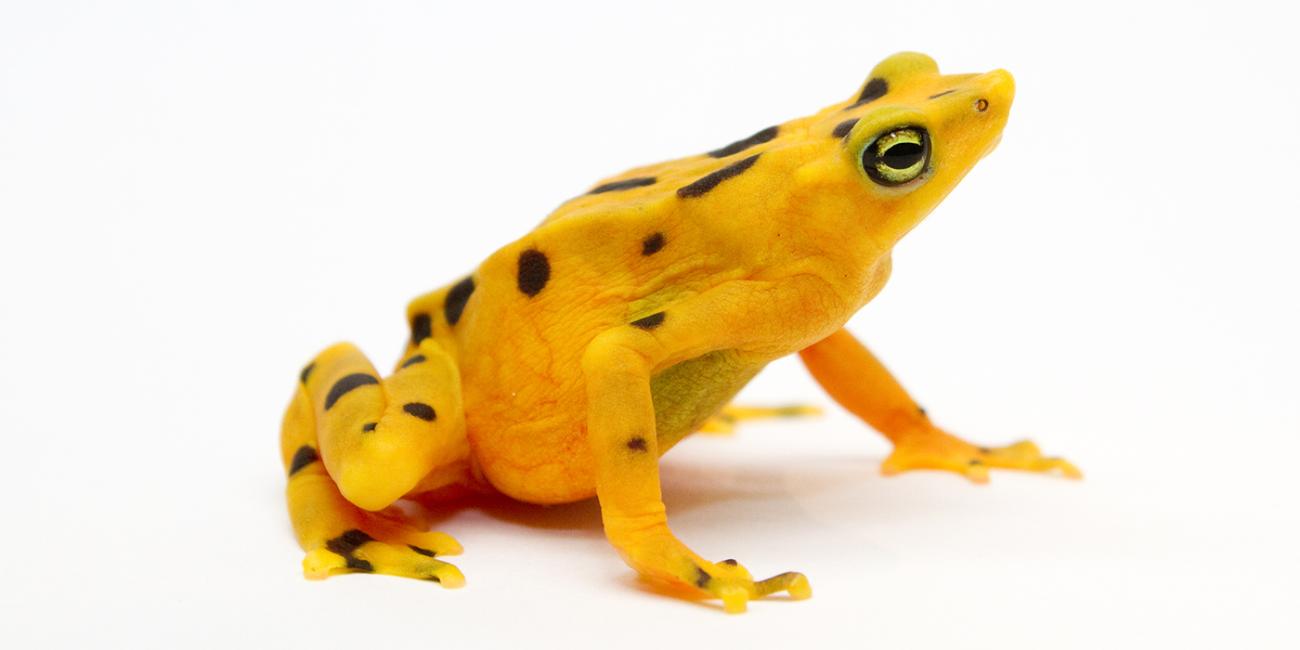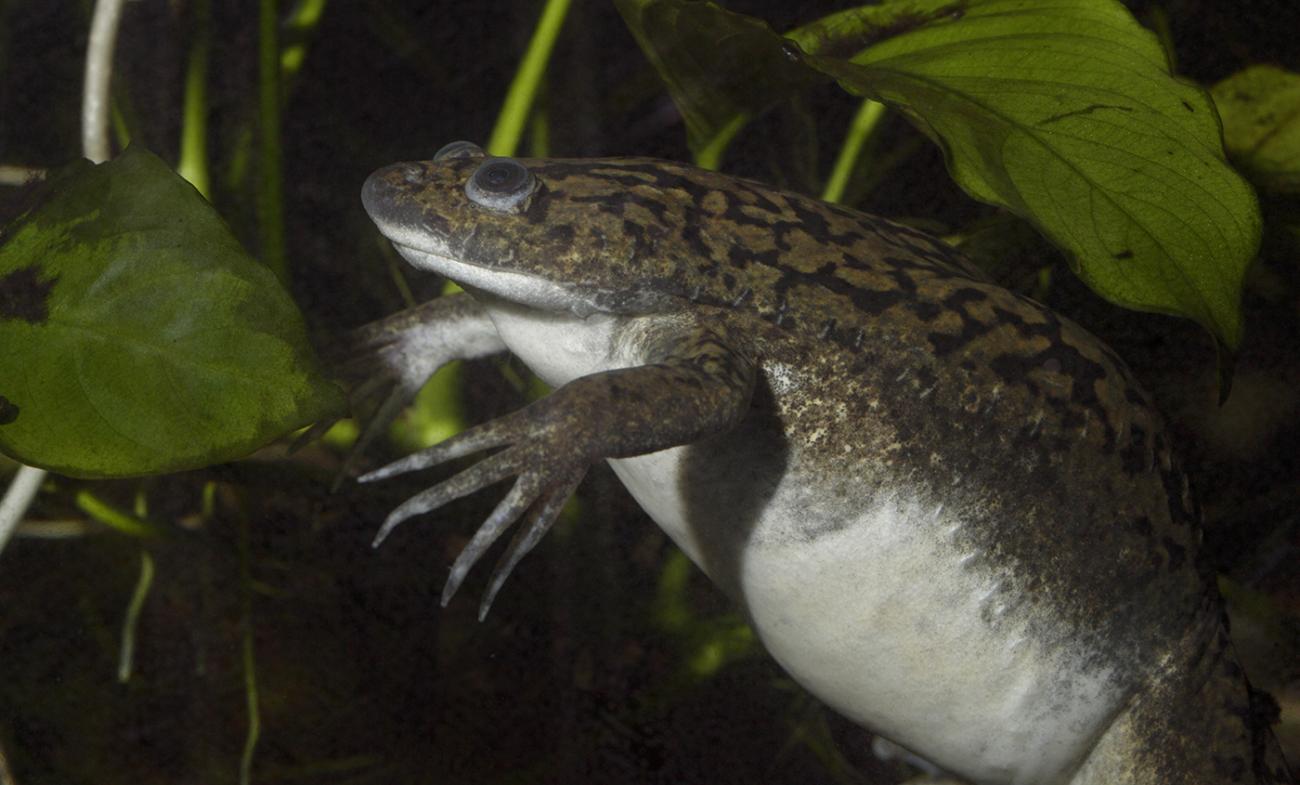Genomic Responses to Disease
Scientists at the Smithsonian Conservation Biology Institute's Center for Species Survival and Center for Conservation Genomics are working to save amphibians from the deadly chytridiomycosis fungus by identifying genes associated with an individual frog or salamander’s ability to resist infection through analyzing transcriptomes (or the genes that turn on or off) during the course of an infection. The better understanding of innate resistance to chytridiomycosis within species may help scientists selectively breed amphibians for resistance to disease.
There is natural variation in amphibians’ susceptibility to disease. For example, African clawed frogs seem to be resistant to chytridiomycosis infections whereas Panamanian golden frogs are highly susceptible. However, within some species, such as lowland leopard frogs, the differential disease outcomes vary when frogs are exposed to disease. SCBI scientists have done studies on lowland leopard frogs that found that the individuals best able to manage disease infections have unique genetic signals.
Partners
Anna Savage, University of Central Florida
Support
This work is supported by the U.S. Fish & Wildlife Service, the Anele Kolohe Foundation, the Shared Earth Foundation, the AZA Golden Frog Species Survival Program and the Maryland Zoo in Baltimore.














